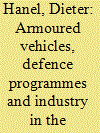| Srl | Item |
| 1 |
ID:
100462


|
|
|
| 2 |
ID:
092727


|
|
|
|
|
| Publication |
2009.
|
| Summary/Abstract |
Modern portfolio theory is applied to the problem of selecting which vehicle technologies and fuels to use in the next generation of vehicles. Selecting vehicles with the lowest lifetime cost is complicated by the fact that future prices are uncertain, just as selecting securities for an investment portfolio is complicated by the fact that future returns are uncertain. A quadratic program is developed based on modern portfolio theory, with the objective of minimizing the expected lifetime cost of the "vehicle portfolio". Constraints limit greenhouse gas emissions, as well as the variance of the cost. A case study is performed for light-duty passenger vehicles in the United States, drawing emissions and usage data from the US Environmental Protection Agency's MOVES and Department of Energy's GREET models, among other sources. Four vehicle technologies are considered: conventional gasoline, conventional diesel, grid-independent (non-plug-in) gasoline-electric hybrid, and flex fuel using E85. Results indicate that much of the uncertainty surrounding cost stems from fuel price fluctuations, and that fuel efficient vehicles can lower cost variance. Hybrids exhibit the lowest cost variances of the technologies considered, making them an arguably financially conservative choice.
|
|
|
|
|
|
|
|
|
|
|
|
|
|
|
|
| 3 |
ID:
110575


|
|
|
|
|
| Publication |
2011.
|
| Summary/Abstract |
With the number of vehicles on the world's roads expected to grow to 2.9 billion by 2050, steps must be taken to reduce the CO2 emissions from transport. Battery electric vehicles (BEVs) can help achieve this. This study aimed to determine the CO2 emissions stemming from BEV operation in different countries and to compare those CO2 emissions to the emissions from similar vehicles based on internal combustion engines (ICEs). This study selected four ICE-based vehicles, and modeled BEVs based on the specifications of each of these vehicles. The modeled BEVs were run through a simulation to determine their energy consumption. Their energy consumption was combined with data on the CO2 intensity of the power generation mix in different countries to reveal the emissions resulting from BEV operation. The CO2 emissions from the BEVs were compared to the CO2 emissions for their ICE-based counterparts. Amongst the results, it was shown that for China and India, and other countries with a similarly high CO2 intensity, unless power generation becomes dramatically less CO2 intensive, BEVs will not be able to deliver a meaningful decrease in CO2 emissions and an increase in the penetration of BEVs could actually lead to higher CO2 emissions.
|
|
|
|
|
|
|
|
|
|
|
|
|
|
|
|
| 4 |
ID:
125547


|
|
|
|
|
| Publication |
2013.
|
| Summary/Abstract |
China is experiencing rapid motorization and each city has a unique motorization pathway owing to its different characteristics and development progress. The temporal and spatial variation trend in on-road energy use and CO2 emissions need to be better understood in order to project the future growth and to support policy-making at both local and national levels. This study simulates the on-road energy use and CO2 emissions of all of China's prefectural-level cities (and above) from 1978 through 2008, on the basis of the collected vehicle data from hundreds of national and local statistical yearbooks. The results show that China's on-road energy use and CO2 emissions were 119 million metric tons (MMT) and 377 MMT in 2008, respectively-20 times the levels in 1978. The economically developed cities and heavy industrial cities had the highest on-road energy use and CO2 emissions before the year 2000, but recently the spatial distribution has varied significantly as the uptake of motorization increases successively in these cities. Now and in the near future, the most important driving force of the on-road energy and CO2 growth in China is the great number of average cities that have just started or will soon start the motorization.
|
|
|
|
|
|
|
|
|
|
|
|
|
|
|
|
| 5 |
ID:
001885


|
|
|
|
|
| Publication |
London, Smi Publishers, 1999.
|
| Description |
xx,114p.
|
| Standard Number |
1862060177
|
|
|
|
|
|
|
|
|
|
|
|
Copies: C:1/I:0,R:0,Q:0
Circulation
| Accession# | Call# | Current Location | Status | Policy | Location |
| 042888 | 623.74/HOO 042888 | Main | On Shelf | General | |
|
|
|
|